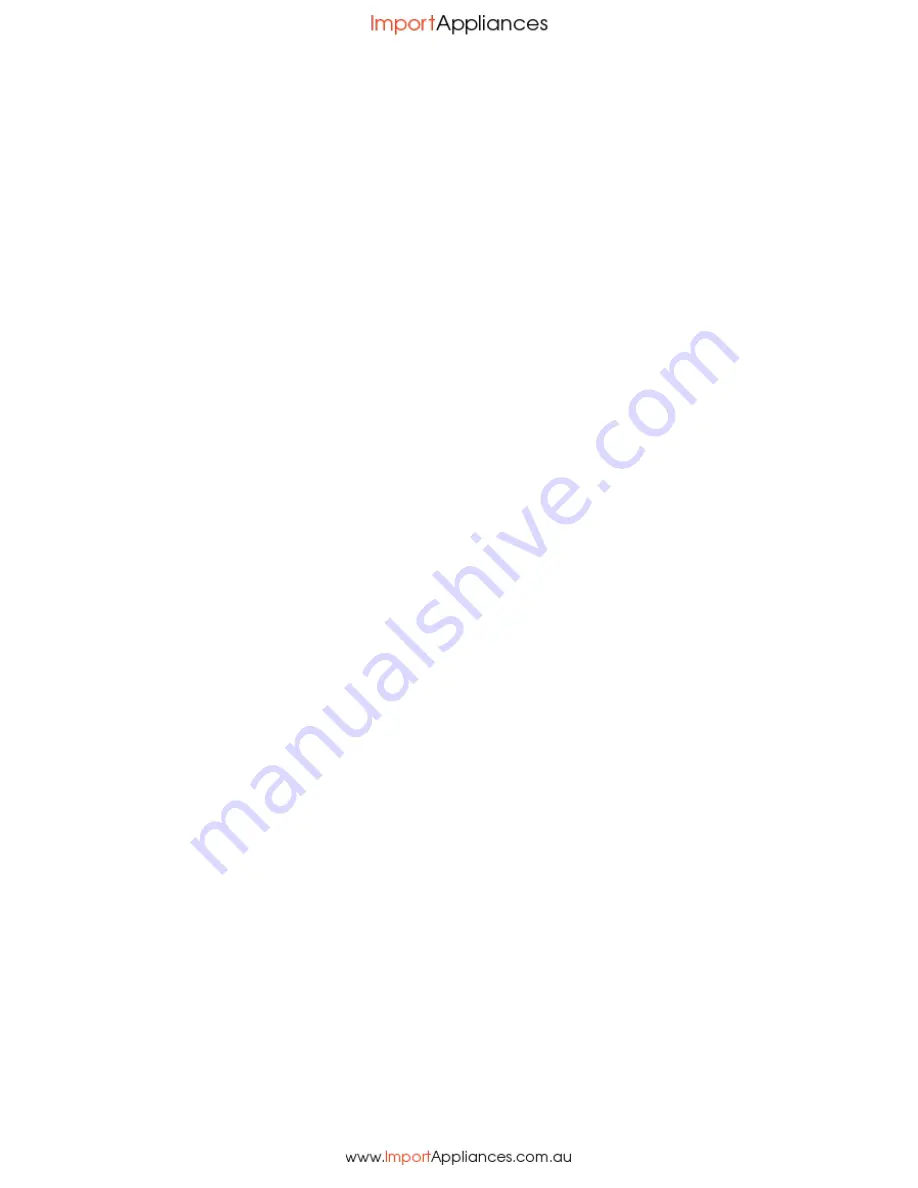
Tested for you in our cooking studio
en
45
cooked in several stages. These are indicated in the
table.
Steaming
Poultry products are cooked more gently using the
steaming function than with steam assistance. They
remain particularly succulent. As an alternative, you can
also fry poultry products quickly before steaming; the
cooking time will be reduced.
Larger pieces require a longer heating-up time and a
longer cooking time. If you are using several pieces
which are the same weight, the heating-up time is
increased, and not the cooking time.
Poultry items do not have to be turned.
Use the perforated steam container (size XL) and slide
the universal pan in underneath. You can also use a
glass tray and place this onto the wire rack.
Grilling
Keep the appliance door closed when using the grill.
Never grill with the appliance door open.
Slide the universal pan into the oven at the indicated
shelf position with the wire rack attached. Dripping fat
will be collected. Ensure that the wire rack is positioned
correctly on the universal pan.
~
"Accessories"
on page 11
Note:
When grilling very fatty items, do not slide the
universal pan in directly under the wire rack, but rather
at level 2.
When grilling, try wherever possible to use pieces of
food which are of a similar thickness and weight. This
will allow them to brown evenly and remain succulent
and juicy. Place the food to be grilled directly onto the
wire rack.
Use tongs to turn the pieces of food you are grilling. If
you pierce the meat with a fork, the juices will run out
and it will become dry.
Notes
■
The grill element switches itself on and off
continuously; this is normal. The grill setting
determines how frequently this occurs.
■
Smoke may be produced when grilling.
Meat thermometer
You can cook accurately using a meat thermometer.
Read important notes on using the meat thermometer in
the corresponding chapter. There, you can find notes
on inserting the meat thermometer, the possible heating
types and additional information.
~
"Meat
thermometer" on page 24
Recommended setting values
In the table, you can find the ideal heating type for the
kind of poultry you are cooking. The temperature and
cooking time depend on the amount, composition and
temperature of the food. Setting ranges are indicated
for this reason. Try using the lower values at first. You
can increase the temperature next time if necessary.
The setting values are based on the assumption that
unstuffed, chilled, ready-to-roast poultry is placed into a
cold cooking compartment. By doing so, you can make
energy savings of up to 20 per cent. If you preheat the
oven, the indicated cooking times will be reduced by
several minutes.
In the table, you can find specifications for poultry with
default values for the weight. If you wish to cook heavier
poultry, use the lower temperature in every case. If
cooking multiple pieces, use the weight of the heaviest
piece as a reference for determining the cooking time.
The individual pieces should be approximately equal in
size.
A general rule: the larger the poultry is, the lower the
cooking temperature and the longer the cooking time.
Turn the poultry after approx.
^
to
Z
of the indicated
time.
Note:
Only use greaseproof paper that is suitable for
the selected temperature. Always cut greaseproof
paper to size.
Tips
■
For duck or goose, pierce the skin on the underside
of the wings. This allows the fat to run out.
■
If using duck breast, score the skin. Do not turn duck
breasts.
■
When you turn poultry, ensure that the breast side or
the skin side is underneath at first.
■
Poultry will turn out particularly crispy and brown if
you baste it towards the end of the roasting time with
butter, salted water or orange juice.
Remove unused accessories from the cooking
compartment. This will achieve the best possible
cooking results and energy savings of up to 20 per
cent.
Types of heating used:
■
:
4D hot air
■
%
Top/bottom heating
■
4
Circulated air grilling
■
(
Grill, large area
■
,
coolStart function
■
P
Steaming
The levels of steam intensity are indicated as numbers
in the table:
■
1 = Low
■
2 = Medium
■
3 = High






























